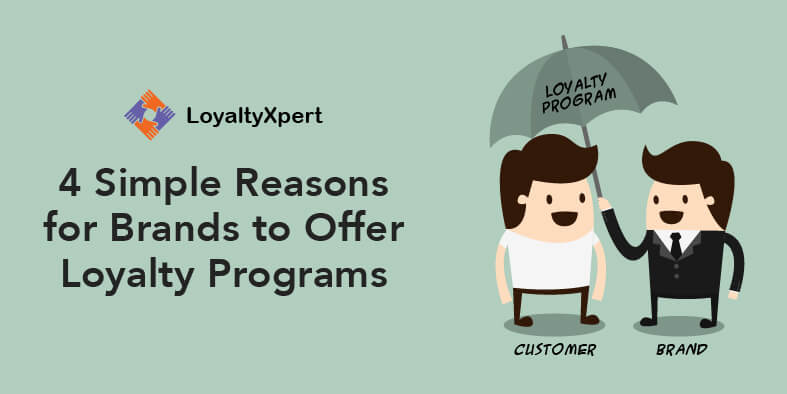“It is not the employer who pays the wages. Employers only handle money. It is the customer who pays the wages.”- Henry Ford
The above quote is one of my favourites. It succinctly portrays what many businesses and start-ups are dependent on to achieve their long-term revenue generation and profitability goals. Customers are the revenue creators. And customer loyalty is indispensable to the overall success of brands and businesses.
Why?
The digital boom, fierce market competition and increasing customer expectations paint a rather bleak picture for businesses that are functioning with financial and resource bandwidth. Achieving customer-centricity is the only compelling way to attract and engage customers and over time, transform into loyal customers with rewards and incentives.
Engaging with an existing customer is cheaper than acquiring a new one. Which means, businesses need not have to work from the scratch and instead, work out on strategies to earn trust from the existing customers to engage in repurchase and stay loyal to the brands. Customer loyalty earned through various, attractive loyalty programs and reward plans bridge the gaps between brands and customers by fostering healthy and meaningful relationships and increasing customer engagement.
Loyalty rewards and programs keep customers hooked to the brands and add incremental value to the brand health. A research by Edelman finds that customers that are loyal to brands are willing to spend 67 per cent more than new customers, confirming discount, coupons, personalized promotional offers, rewards and incentives and loyalty cards prevent customers from disengaging with the brands.
If you are still rethinking your decision about building loyalty programs and plans for your brand, below are some of the strong reasons to sign up for the loyalty program services:
Customer Loyalty Programs Reflects Positively on Customer Satisfaction:
There are three metrics used to measure customer satisfaction levels– Net promoter scores (NPS), customer satisfaction (CSat) levels and customer efforts score (CES).
-
- NPS: NPS or Net promoter score helps measure the likelihood of customers recommending a brand or its products and services to their peers. The customers’ ratings on NPS determine whether they are detractors (who give poor rating and negative reviews), passive (who are satisfied and loyal and also have affinity towards other brands’ products or services) and promoters (who give highest ratings, positive reviews and recommendations to other potential buyers). A good loyalty program encourages customers and buyers to give high rating and provide positive feedback, serving as promoters and brand evangelists.
- CSat: CSat or customer satisfaction scores refer to the ratings on customer experience with a brand’s customer services or support. The ratings are measured between scales of very dissatisfied, neutral, satisfied and exceeded satisfaction levels. A well-planned loyalty program that often keep track of buyers’ needs and requirements and accordingly facilitating it through rewards and discounts on relevant products or services increase CSat scores.
- CES: CES or customer effort score refers to the amount of efforts put in by a customer to communicate or engage with a brand. A thoroughly and intuitively planned loyalty program delights customers by reducing their efforts in buying and enquiring about products or service and enabling quick interactions. It also helps in keeping customers loyal to the brands for its values, commitment towards customers and meeting their expectations.
Build A Strong Online and Social Media Profile:
A study by Hawk Incentives found that customer always keep a tab of best deals and discounts regardless of the current economic situation. In the current online-driven consumer market, buyers tend to compare online the prices, discounts and reviews of products and services before making a call. Moreover, today’s customers use social media to share both positive and negative experiences with a brand. A loyalty program keeps customers happy by rewarding for their activities and providing them opportunities to engage with the brand at attractive prices, discounts and redeemable points or scores. Customer reviews, tagging and posts on social media project a brand in a positive light on online forums and social media platform, attracting potential buyers and customers.
Outshine Competitors:
The purpose of loyalty program is to reduce the possibility of customers from abandoning the brand and engaging with rival brands. A great loyalty plan that helps save money and drive buying activities while also offering monetary rewards, gifts, discount coupons and other compelling benefits appeals to large segment of customers. It also improves their shopping experiences and incentivizes their engagement thereby reducing the chances of losing customers to competitors.
Boost Conversion and Profits:
A survey facts finds that nearly 80 percent of consumers feel compelled to make first-time purchase with a new brand that has a discount or offers. Interestingly the study also found that 65 percent of buyers would spend more than what was originally planned to avail a discount. With more engagement and repeat purchases by new and existing customers, brands can increase sales and incur more profits.
No brand or business can have customers on a short leash. The uncertainty in the market conditions, prevailing economic scenarios and changing demands of the new, tech-savvy customer 2.0 complicate marketers’ tasks to keep audiences surprised and elated all the time with their campaign and promotional tactics. To make customers become a part of a brand’s journey and success, loyalty programs and plans help fill out the gaping holes that prevail even after exhaustive marketing and branding efforts.
It is also a great way to pay attention to the customer base and leverage on the partnership to crunch costs involved in customer engagement and retention as well as brand promotion activities.
Leave your thoughts in the comment section below.

